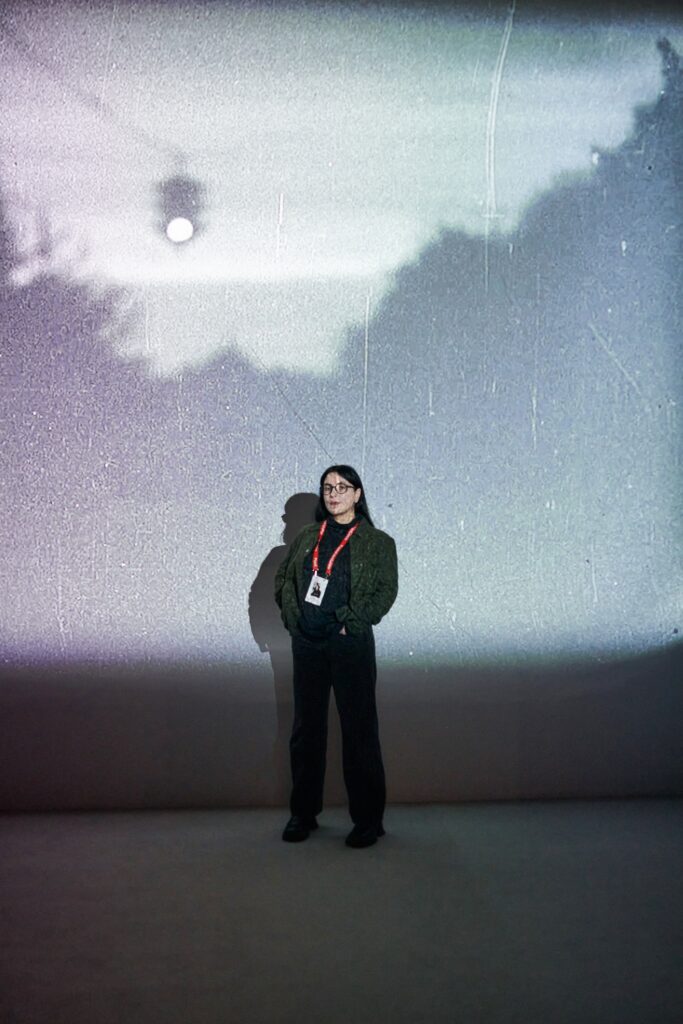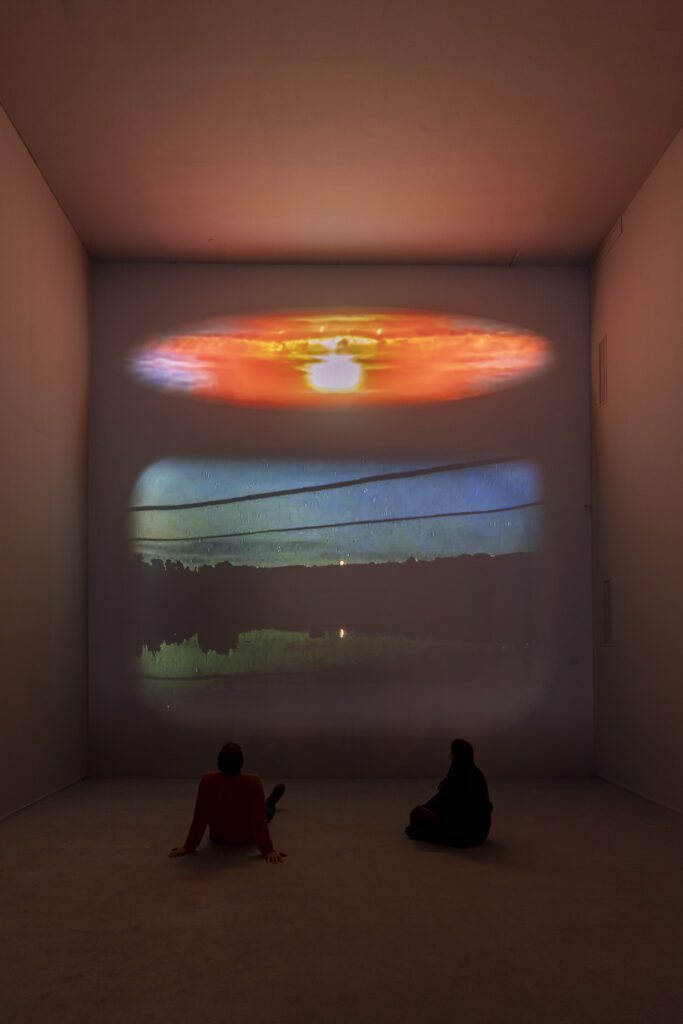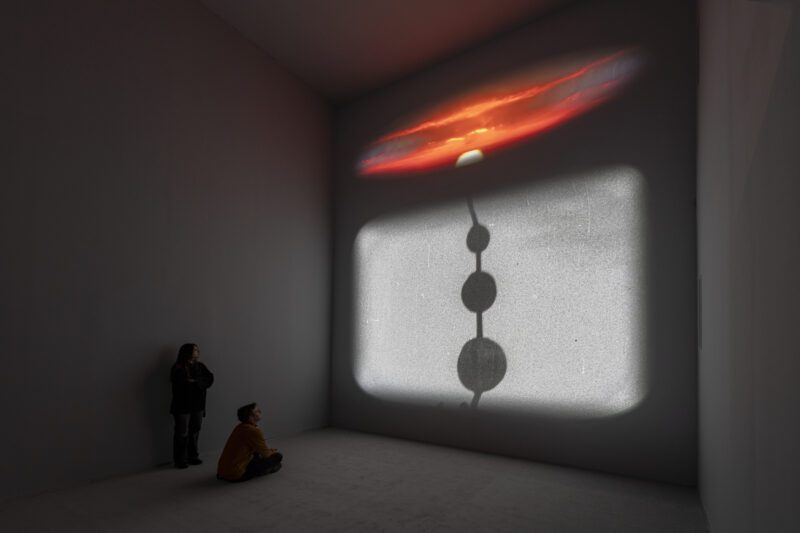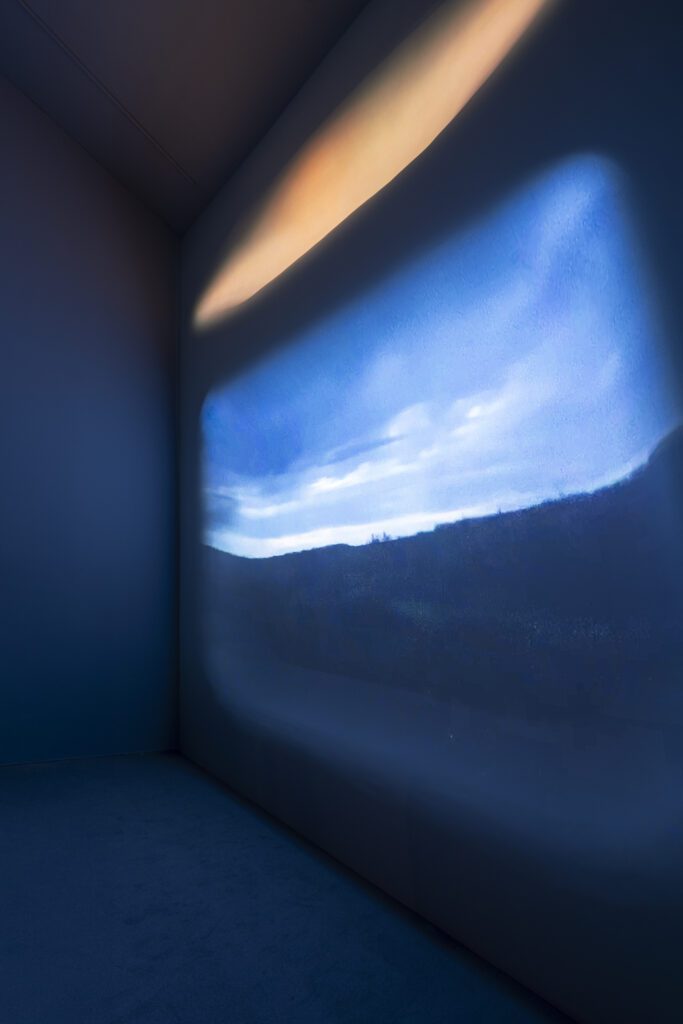“IN Ukrainian culture, the night sky once symbolised poetry, imagination, and mythology. But since 2022, ‘Ukrainian night’ has taken on a different meaning: it’s when sirens begin, missiles fall, and the night becomes both tactic and trauma,” explains Ukrainian artist Lesia Vasylchenko, recipient of the PinchukArtCentre Prize.
The vast Ukrainian sky serves as the focal point of the two video works that earned Lesia the main prize for Ukrainian artists aged 35 and under.
Winning the prize for her video piece, Night Without Shadows and Light Without Rippling of Waves, she donated the 400,000 Ukrainian hryvnia (approximately $10,000) prize money to charities supporting the Ukrainian army.

Lesia Vasylchenko. Photograph: Ela Bialkowska, OKNOStudio for PinchukArtCentre / PinchukArtCentre Prize 2025
“I decided out of a sense of responsibility and solidarity. When your country is under attack, when your friends are on the frontlines, when your family is living through curfews and sleepless nights in fear for their lives, there is no way I would spend the prize on my own needs,” Lesia says.
Night Without Shadows and Light Without Rippling of Waves consists of two video works, The Night and Tachyoness, where time and space are warped, layered, and shifted—juxtaposing imagery to reveal how time is at the mercy of systems of power.
“While I have received recognition for a work that reflects on time, memory, and war, I was also thinking about the people who are living that war in real time—risking their lives, defending not only territory but the right of Ukrainian culture to continue existing. The award has given me a platform to contribute, even in a small way, to the defence of my country and to support those who are actively protecting our future,” Lesia says.
The day before the ceremony, held in central Kyiv, a deadly Russian drone attack killed at least 16 people in what Volodymyr Zelensky deemed “one of the most horrific attacks” on the Ukrainian capital since the full-scale war began. A special recognition outside the competition was dedicated to the memory of Veronika Kozhushko, a young artist from Kharkiv who had applied for the Prize but tragically died on 30 August 2024 as a result of a Russian missile strike targeting residential areas and public spaces in Kharkiv.

Lesia Vasylchenko Night Without Shadows and Light Without Rippling of Waves, 2022-2025. Photograph: Ela Bialkowska, OKNOStudio for PinchukArtCentre / PinchukArtCentre Prize 2025
Art has always been used as a political tool during conflict—a weapon of the oppressed to highlight the injustice of war. From Picasso’s Guernica, confronting the horror of the Spanish Civil War, to Goya’s The Disasters of War, and the photography of Lee Miller, documenting the liberation of Buchenwald and Dachau after the Second World War, artistic expression has long borne witness to violence and resistance.
Art can also become a living record—an alternate history during times of conflict. “Art practice can become a space where the illegible becomes legible—not as evidence, but as experience. It doesn’t offer resolution, but it allows things to coexist that are often split apart in political discourse,” Lesia says.
Lesia hopes her work raises questions about what kind of knowledge is being preserved and what is being excluded—and by whom. “Through my video installation, I want to bring attention to the political dimension of time, the fragility of memory, and the need to resist dominant timelines by constructing spaces where different pasts and possible futures can still coexist,” she explains.
The Night documents the Ukrainian night sky from 1918 to February 2025, showing brief fragments from each year using footage from state archives, drones, CCTV recordings, front-line videos, and family videos. “Each frame is a kind of media fossil, revealing its origin through the technologies of its time—16 mm, VHS, digital. It’s a media archaeology of Ukrainian night,” says Lesia.

Lesia Vasylchenko Night Without Shadows and Light Without Rippling of Waves, 2022-2025. Photograph: Ela Bialkowska, OKNOStudio for PinchukArtCentre / PinchukArtCentre Prize 2025
Tachyoness uses AI to generate a continuous sequence of sunrises over Ukraine from 1990, the year Lesia was born, to 2022. Eight minutes long, the film mirrors the time sunlight takes to reach Earth. “The sunrise is no longer purely a human experience, but a vision imagined by a machine—an algorithm trained on the visual memory of our collective gaze,” Lesia explains.
For Ukrainians, the sky—once a symbol of freedom—has become a space of fear. The blue and yellow stripes of the Ukrainian flag represent an expansive wheat field under an endless sky, symbolising national liberation.
Even before the outbreak of the war with Russia, Ukrainian artists were working under unstable conditions, but “there’s a strong culture of criticality, collectivity, and resistance,” Lesia explains. The prize and the support of Ukrainian artists from the PinchukArtCentre demonstrate the perseverance of the art scene in Kyiv, showing that even in conflict, art has a place to challenge and open a space where other futures can be imagined—offering hope.

Lesia Vasylchenko Night Without Shadows and Light Without Rippling of Waves, 2022-2025. Photograph: Ela Bialkowska, OKNOStudio for PinchukArtCentre / PinchukArtCentre Prize 2025
“Since the full-scale invasion, I think a lot more about responsibility—and that I have to talk about the war in Ukraine every time I have a chance to be heard, to not let people forget that Ukraine is still at war,” Lesia says.
“[The sky] feels like a space where both grief and potential live at once,” says Lesia. “Where borders dissolve and reappear violently, where satellites orbit, where perception and power are projected. It is not only a silent witness to historical ruptures, but also a surface where erased histories wait to emerge—like stars whose light reaches us too late, or ghosts of time waiting to be seen.”
by Sadie Pitcher
